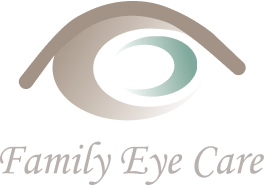At Family Eye Care, our commitment to holistic eye care extends to integrating advanced technologies such as optical coherence tomography (OCT) as part of our comprehensive examination process. Read on to discover the importance of OCT, its functioning, benefits, diagnostic capabilities, and how you can benefit from this technology to preserve and enhance your vision for the long term.
What is an OCT scan?
OCT is a non-invasive imaging technique that offers invaluable insights into the intricate structures of your eyes. This aids in early detection, precise diagnosis, and effective management of various eye conditions. Included as a crucial component of our comprehensive eye examination, OCT utilizes light waves to generate high-resolution, cross-sectional images of the retina, optic nerve, and other ocular tissues. This enables our optometrists to conduct a thorough evaluation of your eye health, providing a comprehensive understanding of any underlying conditions.
How does OCT work?
OCT functions by emitting near-infrared light waves into the eye, which are then reflected back to the device. By measuring the time taken for these waves to return, OCT creates detailed, three-dimensional images of the eye’s internal structures with remarkable precision and clarity. These images aid in assessing the thickness of retinal layers, detecting abnormalities, and monitoring changes over time.
What are the benefits of OCT?
The integration of OCT into our examination process offers several key benefits. Notably, OCT enables the early detection of sight-threatening conditions such as glaucoma, macular degeneration, and diabetic retinopathy. By identifying subtle changes in the eye’s structures before symptoms manifest, prompt intervention can be initiated to prevent vision loss.
In addition, OCT provides highly detailed images of the retina and optic nerve, facilitating precise diagnosis and treatment planning. This ensures tailored interventions that address the specific needs of each patient, leading to improved outcomes.
Lastly, OCT allows for the monitoring of disease progression and treatment efficacy over time. By tracking changes in retinal thickness, fluid accumulation, and other parameters, our optometrists can adjust treatment regimens as needed to optimize visual outcomes.
What can OCT diagnose?
With its ability to deliver detailed, cross-sectional images of ocular structures in real-time, OCT revolutionizes the diagnostic process, enabling early intervention and personalized treatment plans tailored to each patient’s unique needs. Some of the eye conditions OCT can diagnose include:
- Macular edema
- Retinal detachment
- Glaucoma
- Age-related macular degeneration (AMD)
- Diabetic retinopathy
- Optic nerve disorders
Book your appointment
Ready to gain invaluable insights into your eye health with OCT?


